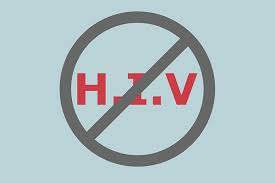Knowledge of and Acceptability to Promote Male Circumcision as part of HIV Prevention Strategy Among Second Years Medical Students at University of Namibia-Windhoek

Abstract:
Background:
The Voluntary
Medical Male Circumcision (VMMC) was recommended as part of HIV prevention strategy
after the randomized controlled trials conducted in three African countries including
South Africa, Kenya and Uganda. Sub-Saharan Africa is more affected by HIV. The
ABC (Abstinence, being faithful and condom use) messages seemed not to reduce HIV,
hence adding more HIV prevention strategies is recommended. Since VMMC had proven
to reduce HIV transmission, the knowledge of people in this matter is paramount.
Aims:
This study
was designated to evaluate the knowledge and acceptability of VMMC among 51 second
years medical students.
Materials
and Methods: A
cross-sectional study was conducted among second years medical students in 2016,
both boys and girls were enrolled in the study.
Results:
The results
showed that all medical students have good to excellent knowledge of MC; 33% have
good knowledge, 49% very good knowledge and 18% excellent knowledge of MC. All participants
(100%) accepted to promote MC as part of HIV prevention strategy.
Conclusion:
The knowledge
of the second years medical students was good to excellent, making it easy for MC
promotion for HIV prevention.
Keywords: Circumcision, HIV, prevention, Medical
students, Windhoek, Namibia.
References:
[1].
Chikutsa, A. (2011). Contextualizing the
adoption of MC as an HIV prevention strategy in Zimbabwe. Retrieved December 17,
2012, from http://uaps2011princeton.edu/papers/110446.
[2].
Dévieux et al (2015). Knowledge, Attitudes,
Practices and Beliefs about Medical Male Circumcision (MMC) among a Sample of Health
Care Providers in Haiti.
http://dx.doi.org/10.1371/journal.pone.0134667.
[3].
Hoffman J.R., Arendse K.D., Larbi C., Johnson
N. & Vivian L. M. H (2015). Perceptions on male circumcision as a preventive
measure against HIV infection and considerations in scaling up of the services:
a qualitative study among police officers in Dar es Salaam. Tanzania. Published
online: 02 March 2015.
[4].
Ikwegbue J.N, Ross A. & Ogbonnaya H.
(2015). Rural Zulu women's knowledge of and attitudes towards medical male circumcision.
Afr J Prim Health Care Fam Med. 2015; 7(1): 775.
[5].
Lissouba et al (2010). Knowledge, attitudes
and practices of women towards male circumcision after three years of roll-out in
Orange Farm, South Africa. pag.ias2011.org/Abstracts.aspx?AID=935.
[6].
Lukobo MD & Bailey RC (2007). Acceptability
of male circumcision for prevention of HIV infection in Zambia. AIDS Care. 2007;19(4):471–477.
http://dx.doi.org/10.1080/09540120601163250 [PubMed].
[7].
Mavhu et al (2011). Prevalence and factors
associated with knowledge of and willingness for male circumcision in rural Zimbabwe.
Tropical Medicine and International Health. volume 16 no 5 pp 589–597 may 2011 doi:10.1111/j.1365-3156.2011.02744.x.
[8].
Milford C, Rambally L, Mantell JE, Kelvin
EA, Mosery NF & Smit JA (2016). Healthcare providers' knowledge, attitudes and
practices towards medical male circumcision and their understandings of its partial
efficacy in HIV prevention: Qualitative research in KwaZulu-Natal, South Africa.
Int J Nurs Stud. 2016 Jan; 53:182-9. doi: 10.1016/j.ijnurstu.2015.07.011. Epub 2015
Aug 1.
[9].
Mubekapi C. (2013). Knowledge, Attitudes
and Practices of Male Circumcision as an HIV Prevention Method among Males in a
Mine, Geita, Tanzania. Copyright © 2013 Stellenbosch University.
[10]. Mndzele
S.L. & Tegegn G.A. (2015). Knowledge, attitude and acceptance of voluntary medical
male circumcision among male students attending Botswana University. Journal of
Public Health and Epidemiology. Vol. 7(1), pp.6-14, January 2015.
[11]. MOHSS
(Ministry of Health and Social Services), Government of Namibia. (2005). Report
of the 2014 National HIV Sentinel Survey. Ministry of Health and Social Services,
Windhoek (Namibia).
[12]. Mugwanya
k. k., Baeten J. M., Nakku-Joloba E., Katabira E., Celum C., Tisch D & Whalen
C. (2010). Knowledge and attitudes about male circumcision for HIV-1 prevention
among heterosexual HIV-1 serodiscordant partnerships in Kampala, Uganda. AIDS Behav.
2010 Oct;14(5):1190-7. doi: 10.1007/s10461-010-9696-x.
[13]. Naidoo
PV, Dawood F, Driver C, Narainsamy M, Ndlovu S, Ndlovu V. (2012). Knowledge, attitudes
and perceptions of pharmacy and nursing students towards male circumcision and HIV
in a KwaZulu-Natal University, South Africa. Afr J Prm Health Care Fam Med. 2012;4(1),
Art. #327, 7 pages. http://dx.doi.org/10.4102/phcfm. v4i1.327.
[14]. Robert
C Bailey, Stephen Moses, Corette B Parker et al (2007). Male circumcision for HIV
prevention in young men in Kisumu, Kenya: a randomised controlled trial. www.thelancet.com
vol 369 February 2007.
[15]. Sengwayo
S.F., Colvin J. C., Newell M & Imrie J. (2009). Men’s knowledge, attitudes and
beliefs about medical male circumcision: A qualitative study in rural northern KwaZulu-Natal,
South Africa.
[16]. Online
available:
http://www.academia.edu/7353297.
[17]. Tarimo
E.A., Francis J.M., Kakoko D., Munseri P., Bakari M & Sandstrom E. (2012). Perceptions
on male circumcision as a preventive measure against HIV infection and considerations
in scaling up of the services: a qualitative study among police officers in Dar
es Salaam-Tanzania. PMID: 22812484 [PubMed - indexed for MEDLINE] PMCID: PMC3416658.
[18]. UNAIDS,
(2006). Male Circumcision: Africa’s Unprecedented Opportunity. http://www.unaidsrstesa.or/site/default/files/malecircumsicion/mc_africa-opp-en.pdf.
[19]. UNAIDS
(2015). Report on the Global AIDS Epidemic. Geneva. Switzerland.
[20]. Westercamp
N & Bailey RC (2007). Acceptability of male circumcision for prevention of HIV/AIDS
in sub-Saharan Africa: a review. AIDS Behav. 2007;11(3):341–355. [PMC free article]
[PubMed].

